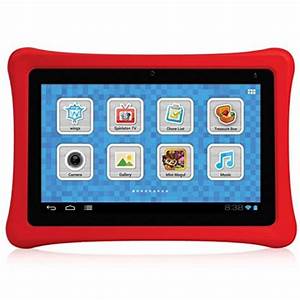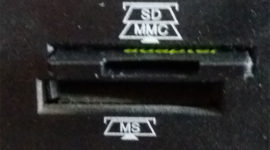Tablet Comparison: nabi 2S vs Kurio 7S
 The nabi 2S and the Kurio 7S are both 7″ tablets designed for children that run on the Android operating system. Each tablet has a touchscreen; the nabi’s has a 1280×800 pixel resolution whilst that of the Kurio is only 1024×600 pixel. Both the nabi and the Kurio have protective bumpers with extra protection at the corners intended to help reduce the chance of damage should the tablet be knocked or dropped.
The nabi 2S and the Kurio 7S are both 7″ tablets designed for children that run on the Android operating system. Each tablet has a touchscreen; the nabi’s has a 1280×800 pixel resolution whilst that of the Kurio is only 1024×600 pixel. Both the nabi and the Kurio have protective bumpers with extra protection at the corners intended to help reduce the chance of damage should the tablet be knocked or dropped.
Both tablets run on Android 4.2 Jelly Bean. Both tablets are essentially regular Android tablets with some changes made to make them more suited for children’s use, and have access to the full Android content ecosystem.
The Kurio 7S comes with 8 gigabytes (GB) of memory, whilst the nabi 2S has double that, with 16GB. Each tablet also has a micro SD card slot, which can expand the memory by taking memory cards up to 32GB in size. The nabi 2S has a quad core processor, with a fifth battery-saver core, whilst the 7S only has a dual core.
Both tablets have stereo speakers, a built-in microphone and a 3.5mm headphone jack. The Kurio 7S has WiFi, whilst the nabi 2S, as well as WiFi, also has Bluetooth and NFC. The 7S has a micro USB port whilst the 2S has a nabi Connector.
The Kurio 7S has two cameras, a rear facing 2.1 megapixel (MP) camera and a front facing 0.3MP one. The nabi 2S only has one camera, a 2.0MP front facing one.
Each tablet comes with parental controls. The nabi 2S has Mommy/Daddy Mode, in which it can be used like a regular tablet, and the Kurio 7S has a similar adult mode.
The educational abilities of the nabi 2S are superior, with Fooz University, and parents can keep track of how their child is progressing.
The nabi 2S is a more powerful tablet with better screen resolution and one of the biggest internal memory storage of any child’s tablet, equivalent to, or better than, many adult tablets, but it is more expensive than the Kurio 7S.

